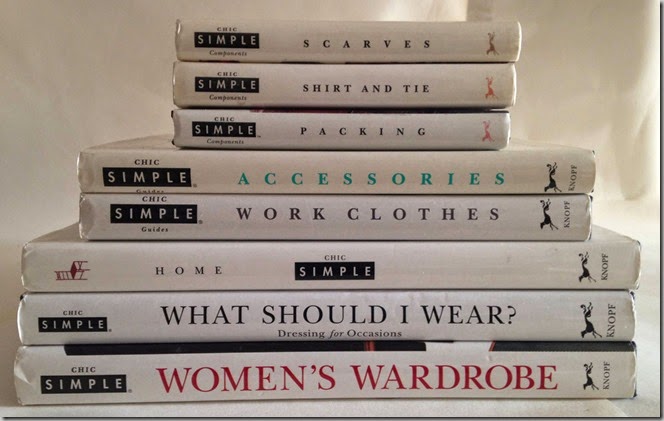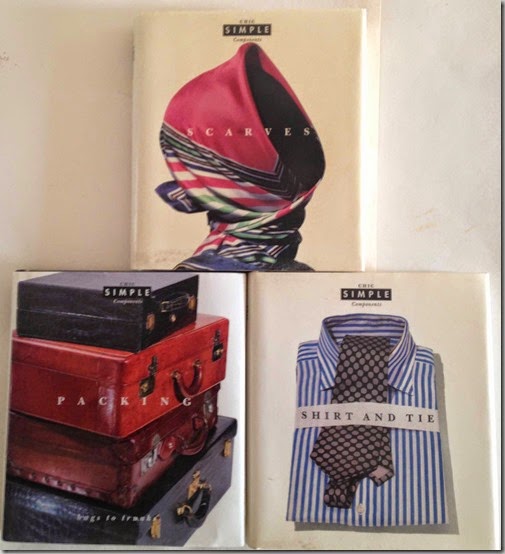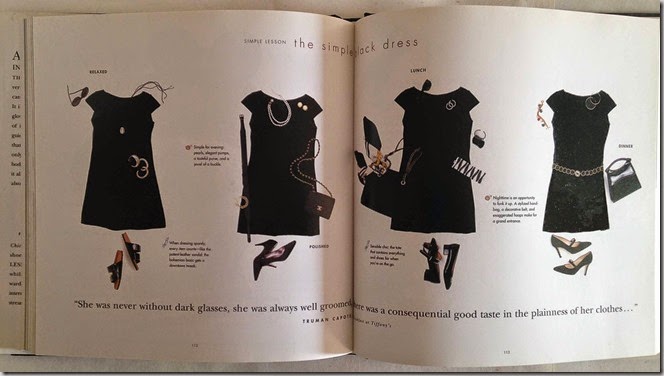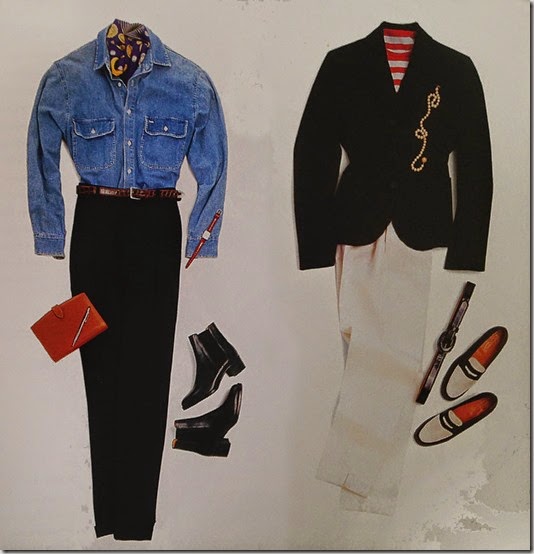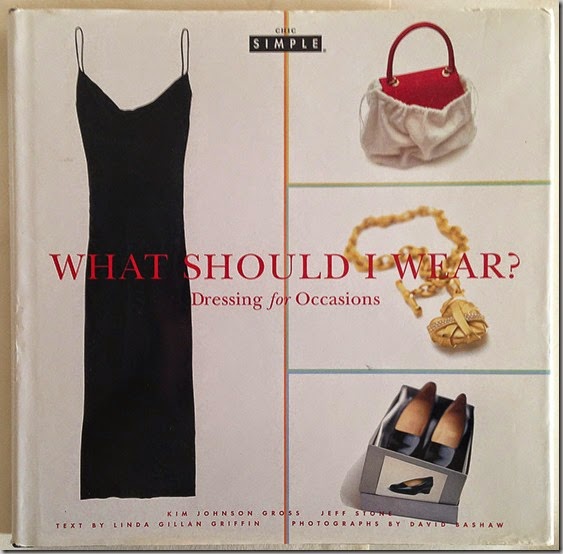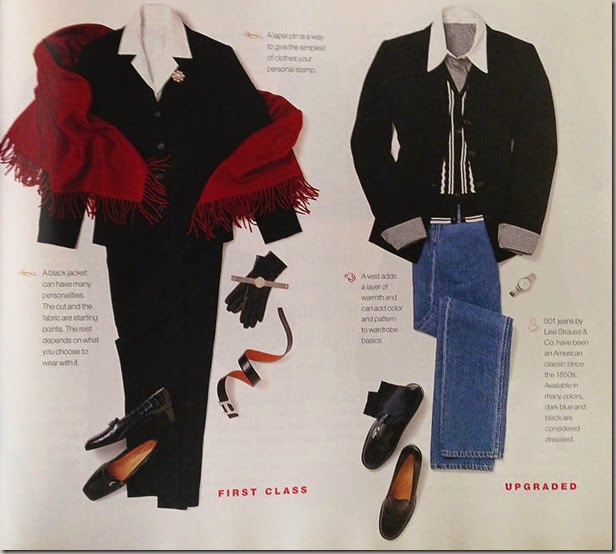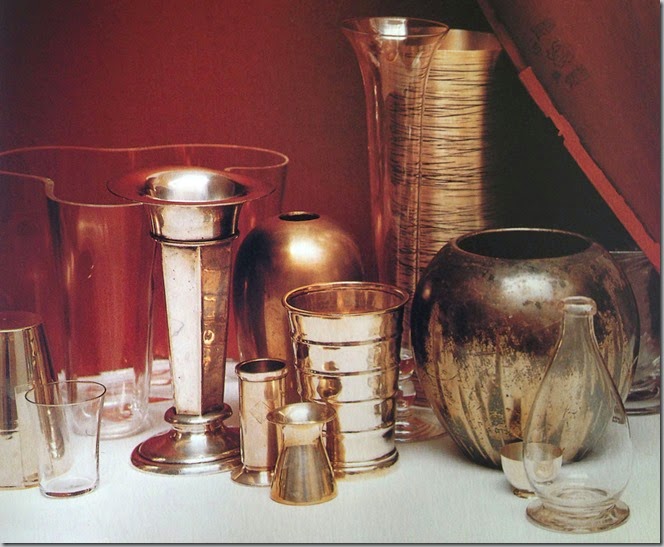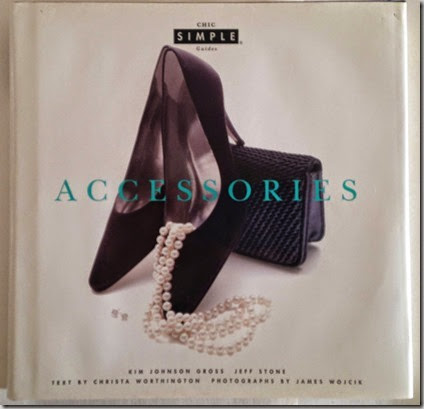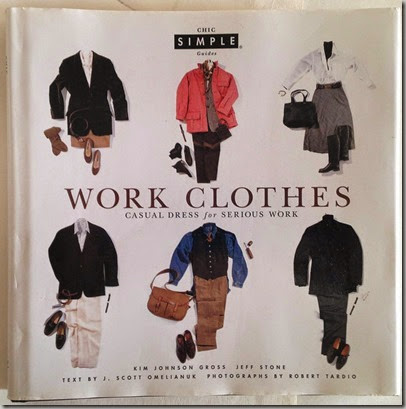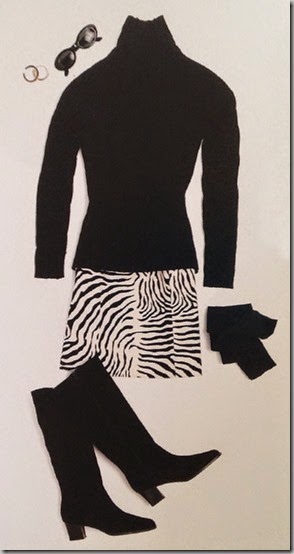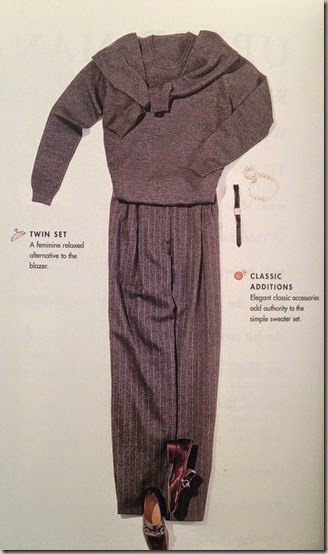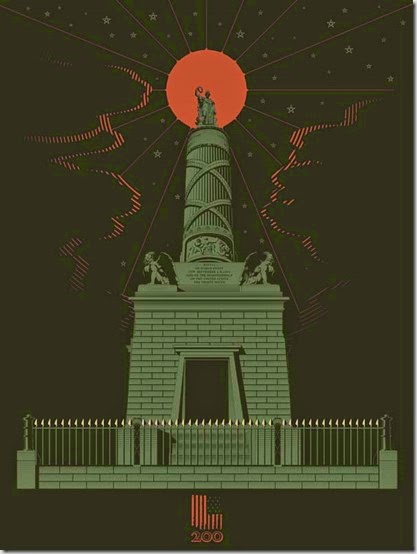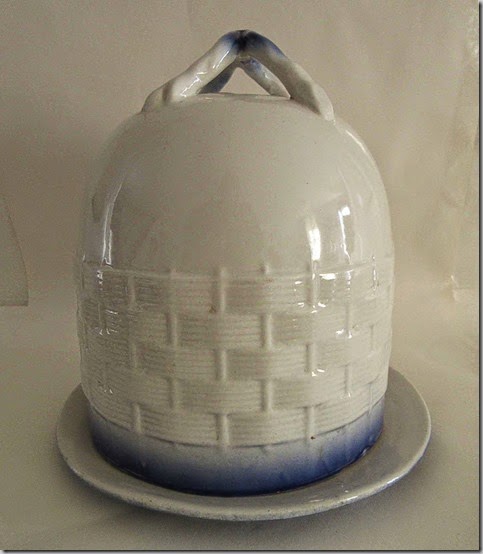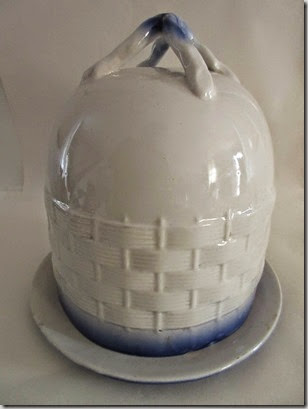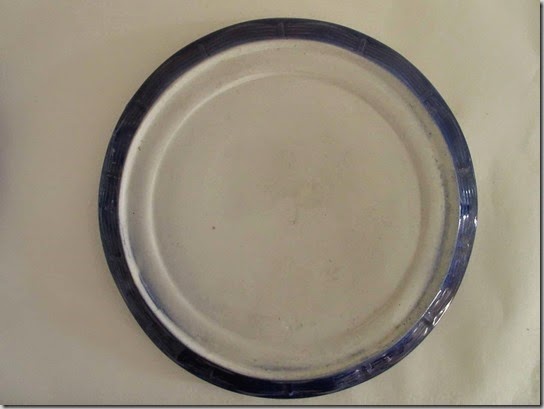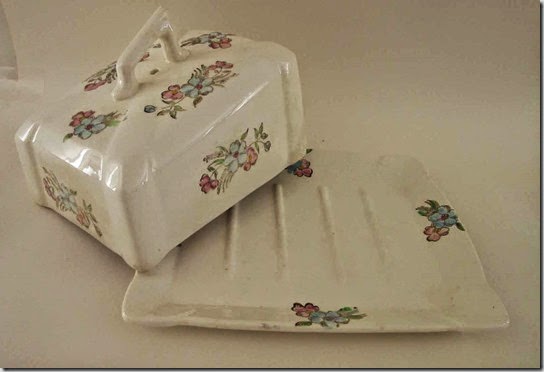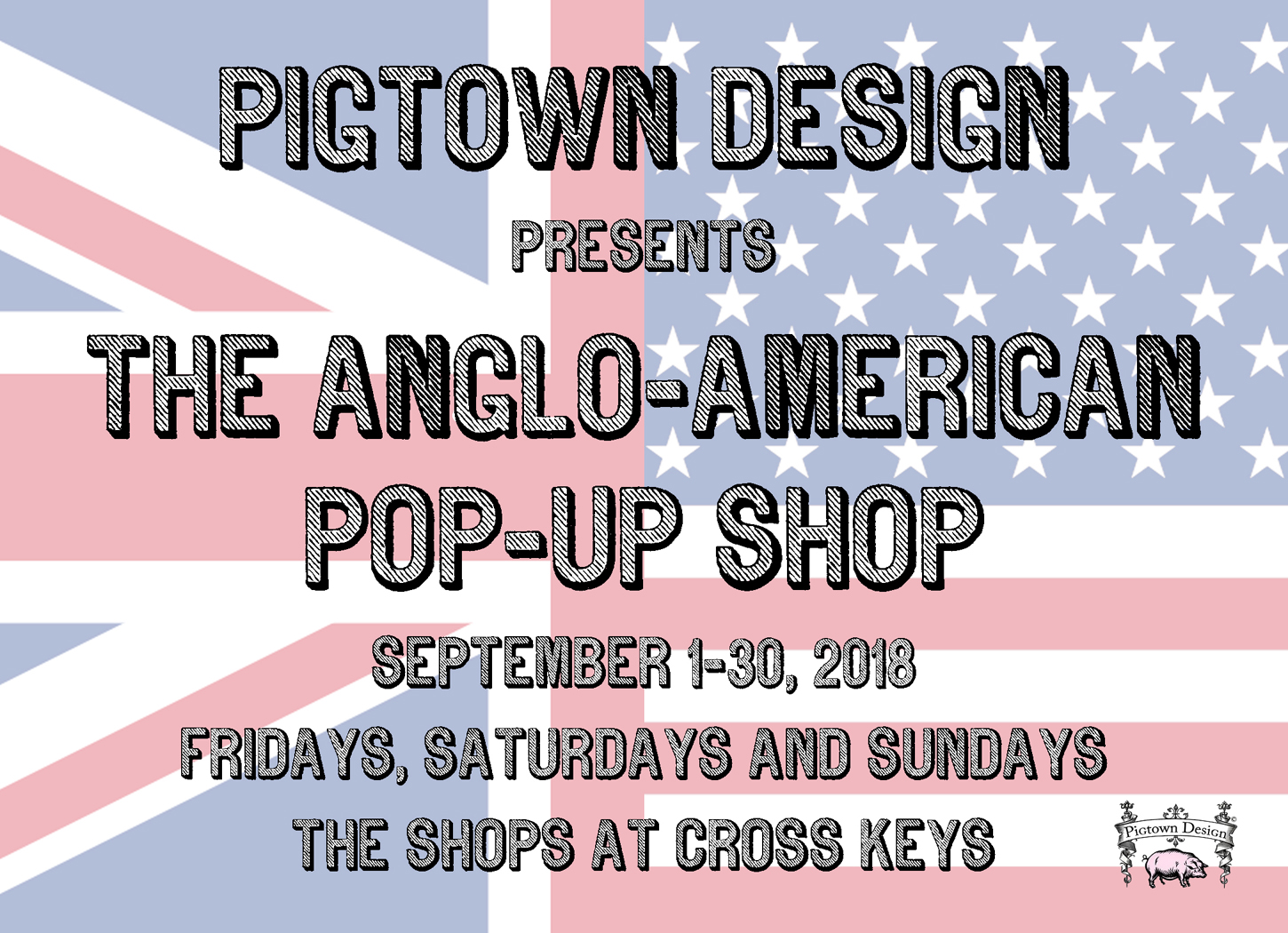Even though it was a stunning weekend here in Maryland, I spent much if it inside at a variety of lectures exploring a similar topic: how design influences the way we live and how it can change lives for the better.
On Saturday, as part of a weekend symposium by The Future Symphony Institute, the Baltimore Architecture Foundation hosted our annual Lewis Lecture on Architecture with Léon Krier, a classically trained pianist and architect specializing in New Urbanism. He has also been the consultant to HRH Prince Charles and his Poundbury project. The lecture had the rather frightening title “The Fear of Backwardness and its Consequences on Architecture and Art”. I was a bit worried.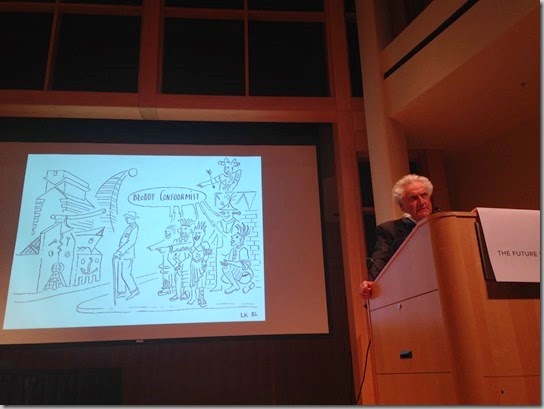
But it turned out that I was in complete agreement with Mr. Krier’s thinking, especially those thoughts regarding classical v. modern architecture. Let’s just say he’s not a modernist. What made the lecture so interesting was that it was illustrated with Mr. Krier’s charming line drawings, which helped get his point across in a clear and concise manner. He argues that you can never have a workable city with either all vernacular or all classical architecture. A good city needs a mix of both. (Sorry for the crap images!)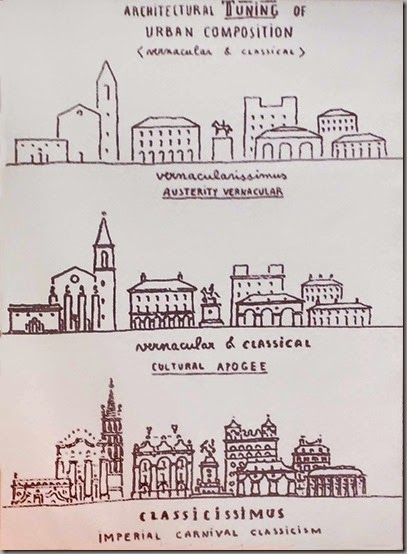
Vernacular is one of those words that architects toss about, but all that it means is that the architecture is “home grown” and that it fits the land, the climate and the people where it’s located. As an example, think of the American Southwest, and contrast the houses there with those in New England. 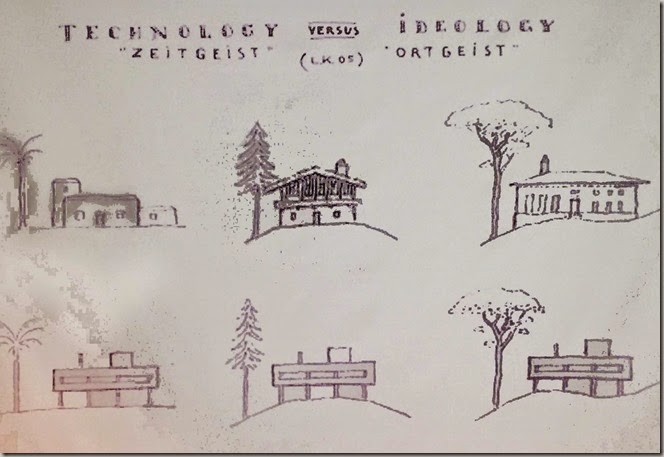
Krier argued that cities need a mix of public and private buildings and a mix of heights and shapes to feel comfortable. 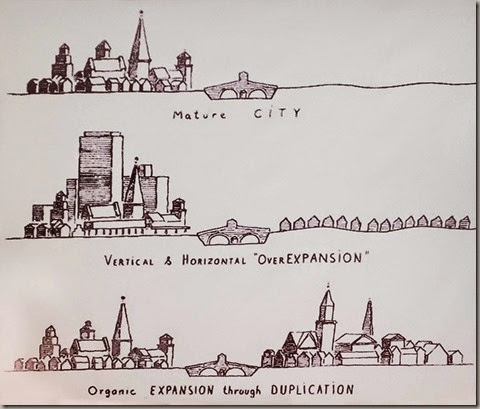
One area where Krier and I are in complete and total agreement is our dislike of modernist architecture. His point was that windows, doors, roofs and the like have evolved over thousands of years, yet they are inherently unchanged. 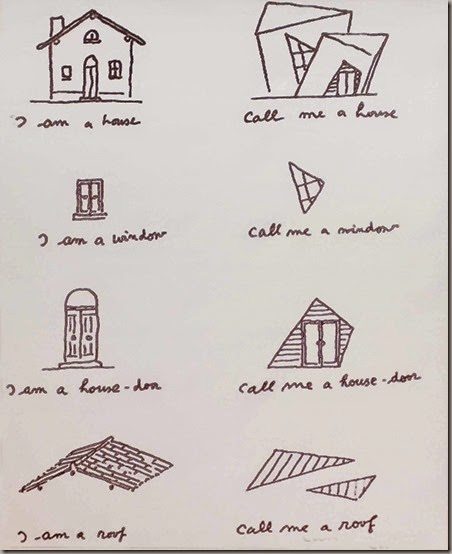
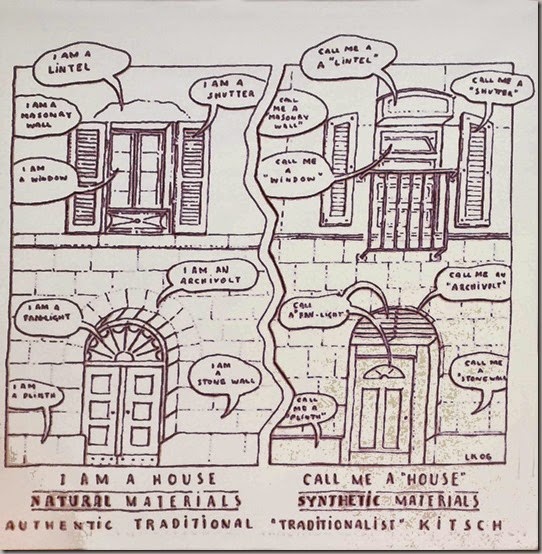
This is one of my main architectural criticisms – I call it point-and-click architecture, when shutters don’t have a relationship with the windows, when Palladian-style windows crop all over the place instead of relating to the building, when synthetic materials are used in place of the real thing, mainly to cut costs. Of course, my prime example of this is the Redneck Taj Mahal I wrote about several months ago.
Another complaint that we both have, is the completely shoddy construction that’s the new normal. Krier had an excellent chart showing how the buildings at Yale had been renovated. Although it’s a little hard to read, you can see that the oldest buildings held up the best, and the newest building – one from 1975, was being renovated 15 years after it was built.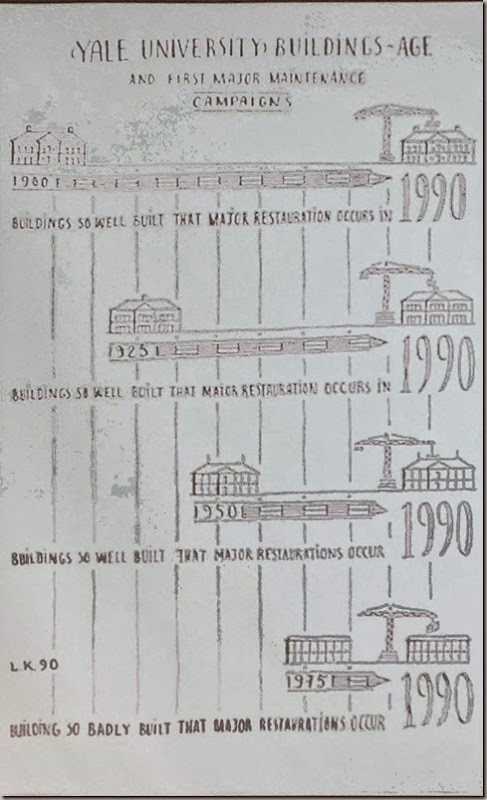
All in all, an excellent lecture, and I was pleased that we were able to bring Krier to Baltimore to speak.
. . . . . . . . . . . . . . . . . . . . . . . . . . . . . . . . .
Zipping forward from the past and classical architecture, to the future and 3-D printing and all that it can do, the second lecture I attended also had a rather daunting name. 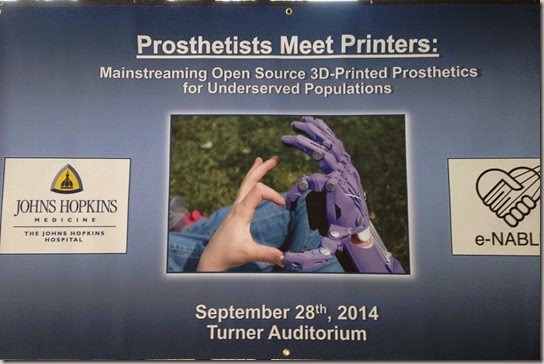
One out of every thousand children is born without a hand, and J, my 7-year old nephew, is one of them. He does quite well by working around issues, and can even ride a regular bike. But when Dr. Albert Chi called my brother a few weeks ago and asked whether J would like to participate in a prototype project where they would PRINT him a hand, the family leapt at the chance. Dr. Chi’s specialty is trauma surgery with a specialty in missing limbs.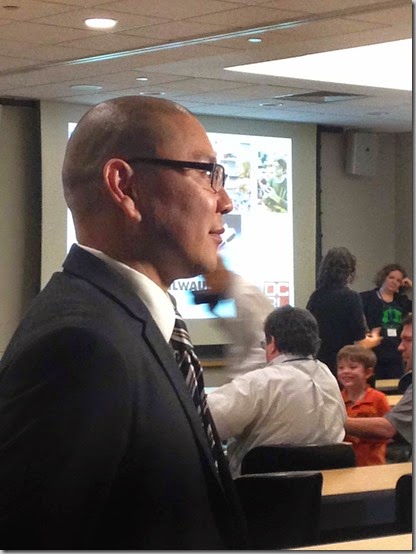 If you don’t know, prosthetic limbs can range in price from $10,000 to more than $90,000, but a 3-D printed hand or arm costs only about $50 in materials. This project, called E-nable, is working with programmers, software engineers and scientists to create these limbs, and they are doing it through open-source software that will be available to anyone.
If you don’t know, prosthetic limbs can range in price from $10,000 to more than $90,000, but a 3-D printed hand or arm costs only about $50 in materials. This project, called E-nable, is working with programmers, software engineers and scientists to create these limbs, and they are doing it through open-source software that will be available to anyone. 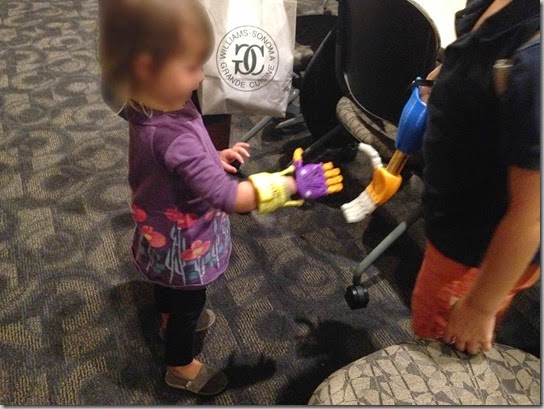
This has particular resonance to our wounded warriors, as well as the victims of war and other disasters in poverty-stricken countries across the world. It’s truly a revolutionary idea and one that will be life-changing for so many.
While J’s prototype arm is in the rudimentary stages, as both he and the technology grow, it will become more and more sophisticated and he will be able to do more and more with it. 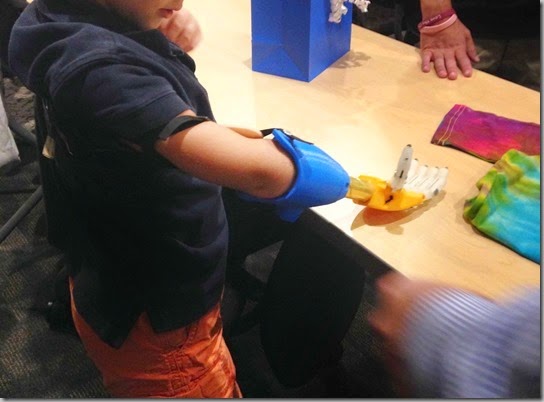
One of the truly incredible things about the organization that is doing this work is how they do it: One man learned that limbs could be printed on 3-D printers, so he made a little YouTube video about it and added a Google map, asking people to click on the map if they had a 3D printer.  More than 300 people did, and also volunteered to print out limbs for children in families across the country. Working together to tweak the software and make adjustments, dozens of completed arms were delivered to children this afternoon to the absolute joy of them and their families.
More than 300 people did, and also volunteered to print out limbs for children in families across the country. Working together to tweak the software and make adjustments, dozens of completed arms were delivered to children this afternoon to the absolute joy of them and their families.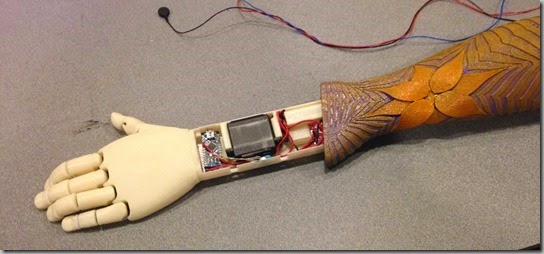
J got his a few weeks ago, and when my brother sent us a seven-second video of J picking up a glass and then beaming at the camera, we all cried tears of happiness for him and in thanks to the person who had made it for him. Our family is honoured and grateful to be a part of this program.
The remarkable thing about this whole program is that it is just about a year old, and all the advances that have been in that time are astonishing. Click here to see more about the E-nable program.
